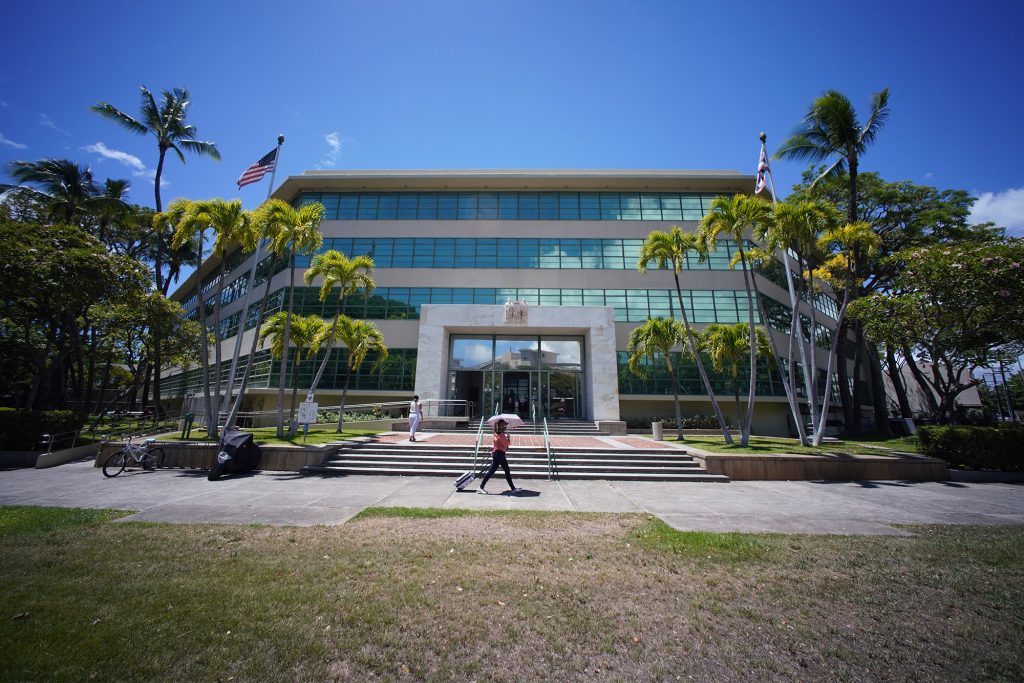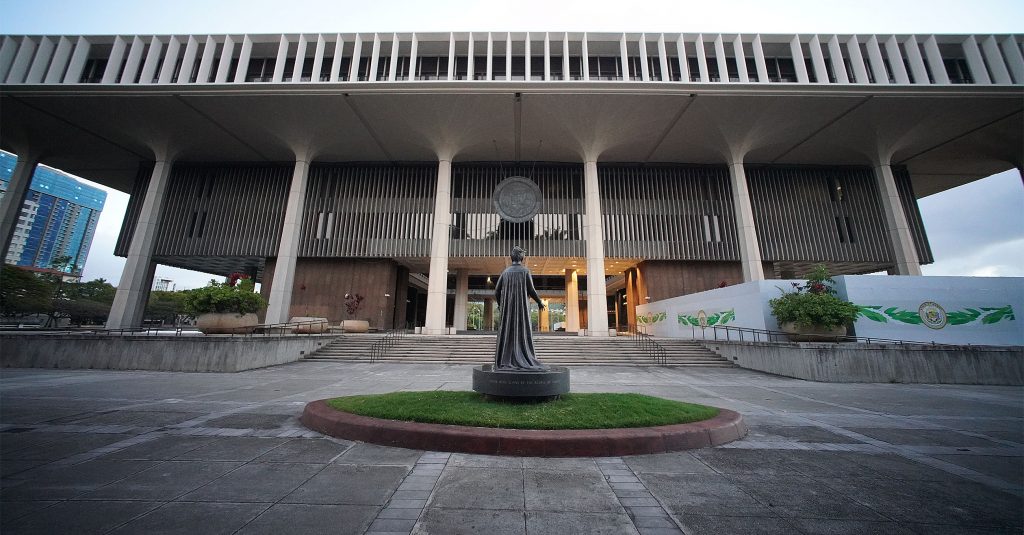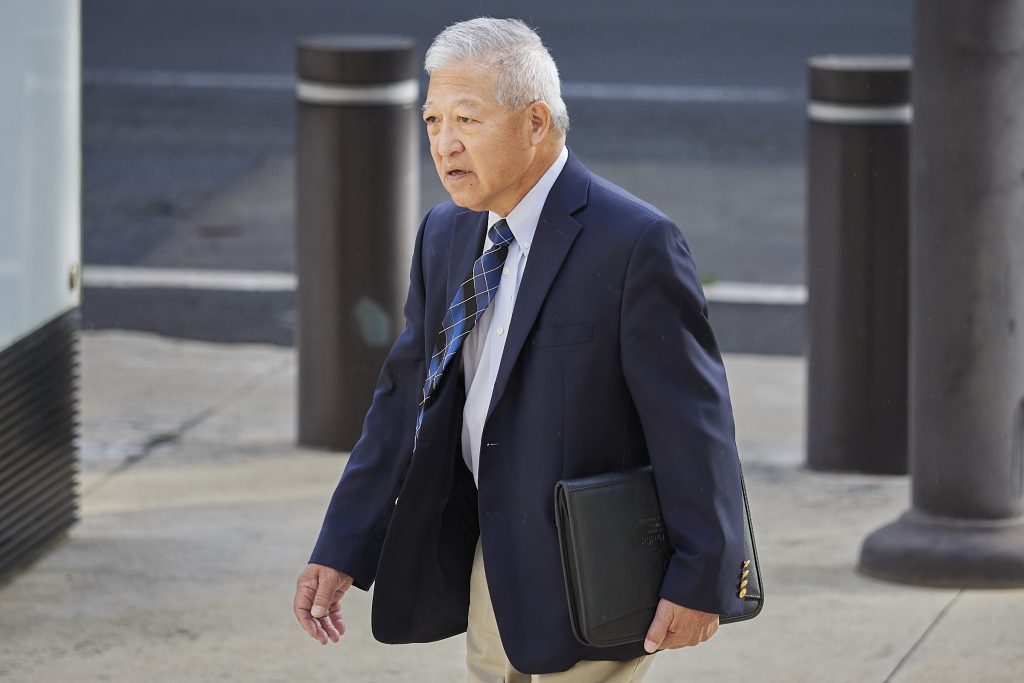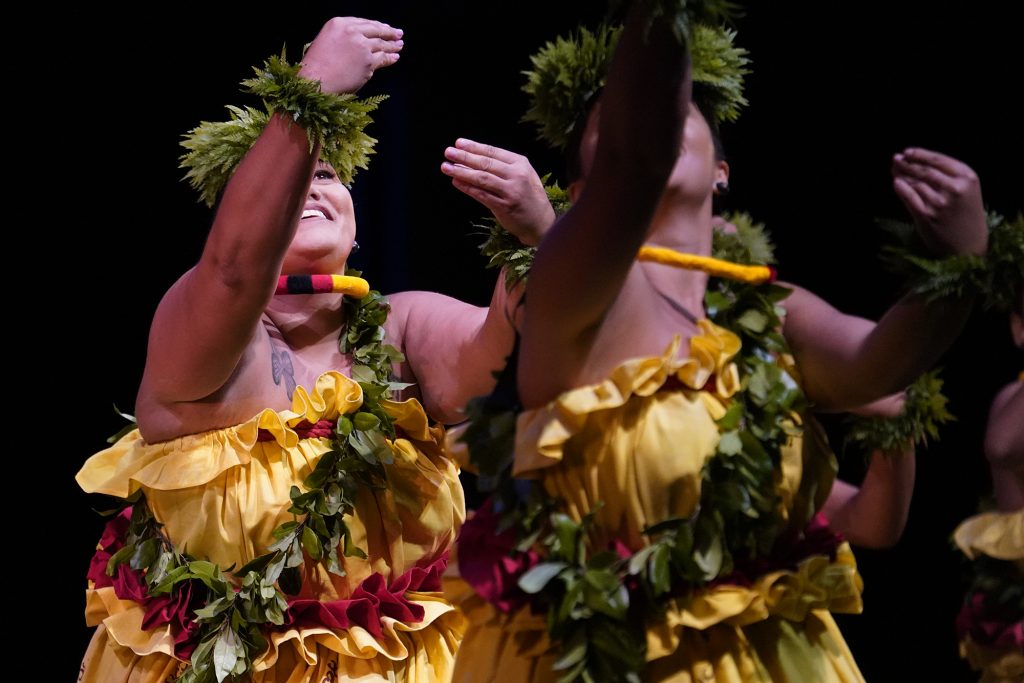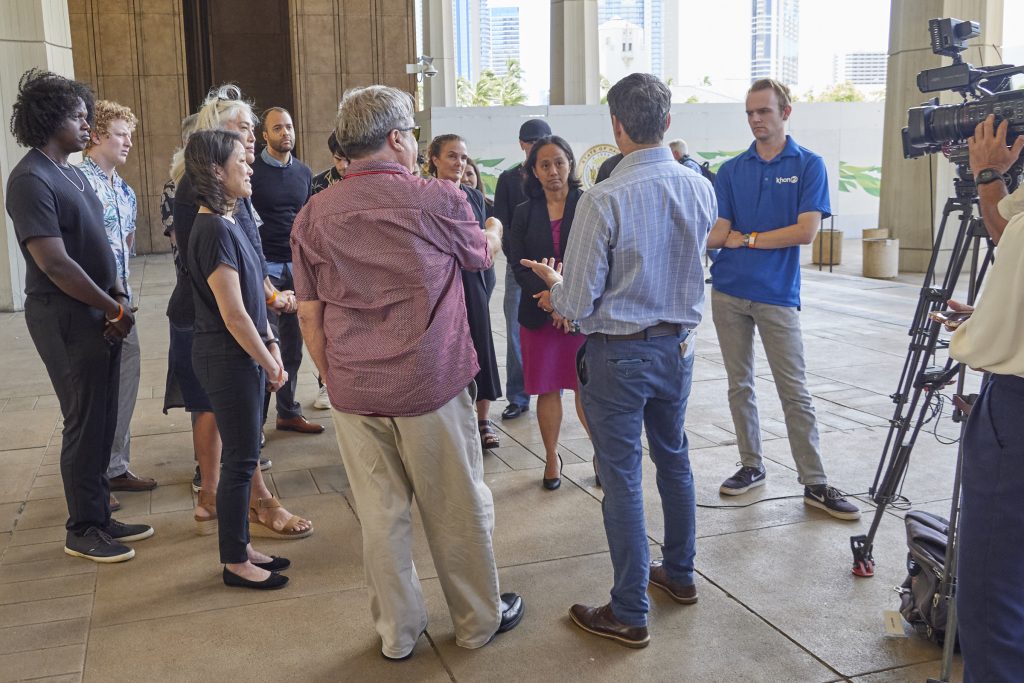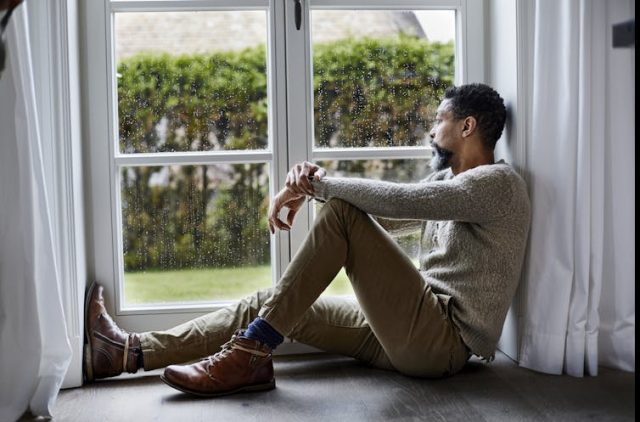The Hawaii Senate unanimously passed a bill to turn over much of West Maui to the Hawaii Community Development Authority, despite growing opposition to the idea.
The Hawaii Senate unanimously passed a bill to turn over much of West Maui to the Hawaii Community Development Authority, despite growing opposition to the idea.
A large section of Kakaako bounded by Kamakee, Queen and Auahi streets shows how the Hawaii Community Development Authority can foster a metamorphosis of an urban landscape in a relatively short time.
In 2006 the parcel was a vacant swath in an economic doldrum, bogged down in a fight over what to do with Native Hawaiian burial remains. Just 10 years later the lot was transformed, home to a bustling mall with trendy local boutiques, an upscale yoga studio and a Nordstrom Rack department store.
Today it is an economic nerve center in HCDA’s burgeoning Kakaako Development District, where blighted warehouses and light industry have given way to luxury high rises with glass-bottomed and infinity swimming pools, multimillion-dollar condos and eateries that include a James Beard-nominated bar slinging five-course dinners for $200 per person.

HCDA acts as a sort of super-charged planning agency for the area, with the power to issue development permits and grant exceptions to zoning rules known as variances. The stunning gentrification of Kakaako in the past 20 years under HCDA speaks for itself: Howard Hughes Holdings Inc. alone, which is one of Kakaako’s main landowners, has completed or started construction on 4,287 condo units since 2013. It has poured more than $5 billion into the area.
HCDA’s mission extends beyond promoting redevelopment to address urban blight. The agency also has been tasked with restoring the Heeia wetlands into a working agricultural and cultural district, under an agency called the Heeia Community Development District. It also oversees the Kalaeloa Community Development District comprising more than 3,600 acres of land within the former Barbers Point Naval Air Station on Leeward Oahu.
Now, if Hawaii lawmakers have their way, HCDA soon could take over the fire-ravaged town of Lahaina. The Hawaii Senate on Tuesday unanimously passed a bill, co-sponsored by Maui Sen. Angus McKelvey and Senate Ways and Means Chairman Donovan Dela Cruz, which will turn over much of West Maui, including Lahaina, to the state agency. Some lawmakers foresee doing the same thing in other parts of the state.
One reason for the proposed state takeover is simple: frustration over the pace at which Maui County is planning Lahaina’s recovery.
“Our challenge is what is the plan?” Maui Sen. Lynne DeCoite said near the end of a recent committee hearing where she supported the bill. “I have not seen a plan that had been executed, but delays after delays. And I think that is the most frustrating part of our job, is to have been told government has not done enough.”
To McKelvey, the goal is to rebuild Lahaina, with residents driving decisions.
“We have the chance to build something back better,” he said in an interview.
The question is whether HCDA can really help build something better. The Legislature established the agency in 1976 to “join the strengths of private enterprise, public development and regulation into a new form capable of long-range planning and implementation of improved community development.”
McKelvey’s bill, now in the House, would give HCDA broad power to do that in much of West Maui as it has in Kakaako, where the agency serves as land-use planning and regulatory agency with a record of getting things done quickly. And it’s not always only about catering to developers. When residents complained of a dangerous pedestrian crossing, for instance, HCDA took it upon itself to plan and construct a new crosswalk using an appropriation from the Legislature.
There’s a key difference between Lahaina and Kakaako: in Lahaina, HCDA would operate under the direction of an elected body called the Lele Community District Board. A principle idea, expressed in the bill and committee reports, is to give Lahaina the power of self-determination through the elected board.
The district would cover a large portion of West Maui extending far north of Lahaina to Kaanapali and south to Maalaea. All state land in the district would be transferred to HCDA’s ownership under the Lele board’s management. It could take over additional land using eminent domain powers. HCDA also would have authority over many land use and planning decisions.

The bill is in many ways merely aspirational. For instance, the Lele board is required to create and implement a development plan “as expeditiously as possible,” according to the bill. But there’s no deadline.
Additionally, the bill says the plan must include “a significant number of affordable homes” and reflect “the values, aspirations and goals of residents.” But the bill doesn’t define how many affordable homes is “significant” or what the “values, aspirations and goals of residents” are, exactly.
There’s also no definition of affordable, which according to HCDA’s current practice in Kakaako can mean a studio that rents for as much as $3,200 per month.
Replacing some 3,000 housing units destroyed in the wildfire must be “a priority, and include the participation of other government agencies, nonprofit organizations, and builders of housing,” the bill says. But it says nothing about the cost of such homes.
Restoration of cultural practices, educational assets and natural resources must be “supported and encouraged,” but not required, according to the bill.
McKelvey acknowledged that much in the bill is not set in stone. The intent is to give discretion to the elected Lele board to make key decisions over details, like definitions related to affordable housing.
“It’s aspirational,” he said. “It’s meant to be that way.”
The bill’s funding is more definite. The bill appropriates $1.5 million for nine full-time positions in the 2025 fiscal year — or about $167,000 per job — within HCDA and another $6 million for HCDA “to engage residents of the Lele community district and conduct predevelopment planning and design within the district.” HCDA would get another $800,000 “for other current expenses” related to the bill.
But that $8.3 million for HCDA in 2025 is meager compared to what would be allocated to the Lele Community Special Fund, whose proceeds could be used for any purpose within HCDA’s authority. The bill appropriates $100 million to the fund, provided that the Lele board can secure another $100 million from private sources.

Todd Apo is a former Honolulu City Council member who later worked as vice president for community affairs for Howard Hughes Holdings Inc., a Texas-based developer that owns much of the land in Kakaako.
In an interview, Apo said the HCDA has capable planners who can do critical work at a time when Maui County government is overwhelmed. HCDA has “expertise and focus,” Apo said, and could help build up the significant manpower needed for the massive planning task.
The state also could pay for infrastructure improvements, which it did in Kakaako, McKelvey said. Normally such costs are borne by the county and typically passed on to the developers and ultimately tenants and residents. A notable aspect of Kakaako is that in much of the area utility lines have been placed underground, something often called for as a measure to prevent power lines from falling off utility poles and sparking fires.
Eric Arquero agrees that HCDA’s planning chops can be an invaluable asset at a critical time. As a co-founder of the Filipino group Kaibigan ng Lahaina, Arquero represents what might be called Lahaina’s silent plurality. Filipinos were the town’s largest ethnic group before the fire, making up 40% of the population.
The organization isn’t completely sold on creating the Lele Community District, Arquero said. But he said, “On the positive side, it opens a discussion on community planning.”
“What HCDA has done in Kakaako is terrifying to many of our West Maui and Maui County residents.”
Maui council member Tamara Paltin
But support for the bill isn’t universal.
In fact, a storm of opposition gathered before the bill’s final Senate hearing. Dela Cruz didn’t let people testify in person at the Ways and Means Committee hearing. But organizations spanning the political spectrum submitted written testimony opposing the bill, from the activist group Lahaina Strong and Hawaii Alliance for Progressive Action to the Maui Chamber of Commerce. They were joined by Maui council members Tamara Paltin and Shane Sinenci and more than 50 individuals.
Opponents raised concerns about centralizing so much power into the hands of a relatively small group of elected officials subject to influence from special interests. HCDA’s gentrification of Kakaako wasn’t viewed as a good thing to some.
“The biggest concern is that this will be detrimental to our community and the rebuild in the wrong hands will cause more division and outrage,” Paltin testified. “What HCDA has done in Kakaako is terrifying to many of our West Maui and Maui County residents.”
Although Kaibigan ng Lahaina didn’t oppose the bill, the group did question how long HCDA and the Lele board would be in charge. Arquero said the bill should be amended to include a sunset date to give HCDA and its Lele board just enough time to develop a plan. The current bill would put HCDA in charge in perpetuity.
“We don’t necessarily want this as a longterm relationship,” Aquero said.
Support was comparatively small, coming from 10 individuals, HCDA, and the Hawaii Department of Business, Economic Development and Tourism, to which HCDA is attached.
The Waianae-based group Hoomana Pono, another supporter, predicted that if the measure becomes law “the Lele Community, the District of Lahaina, the Island of Maui, and the State of Hawaii will emerge from the ashes of the devastating fires like a Phoenix!!!”

This is hardly the first time Dela Cruz has tried to expand HCDA’s power. Last session, for instance, the senator wanted to put HCDA in charge of developing a massive campus for public safety workers to be located in Dela Cruz’s district, under the auspices of the Hawaii Technology Development Corp.
But that venture fell apart after Dela Cruz, DeCoite and others tried to pass a bill that would have removed Vassilis Syrmos, the University of Hawaii’s vice president for research and innovation, who opposed the public safety campus, from the board of the Hawaii Technology Development Corp.
Gov. Josh Green killed the attempt to remove Syrmos by vetoing the bill, saying it was wrong for lawmakers to change a law to target one person. Green also cut a proposed $50 million appropriation for Dela Cruz’s campus through a line-item veto.
The attempt to axe Syrmos last session shows how agency boards such as the one proposed for the Lele Community District aren’t safe from the whims of legislators. If the HCDA bill passes, lawmakers could later amend the statute to change the Lele board if particular board members aren’t doing what certain lawmakers want.
“It’s not an abstract concept,” said Camron Hurt, program manager for Common Cause Hawaii, a non-partisan government watchdog organization. “We’ve seen that. It’s a true concern.”
Dela Cruz did not return a call for comment.
Among HCDA’s goals when it was established was to promote the development of blighted lands to address “unmet community development needs,” including a lack of affordable housing.
“The district is relatively underdeveloped” and offers “the potential for increased growth and development that can alleviate community needs such as low-income housing, parks and open space,” lawmakers wrote, codifying their vision for Kakaako in Hawaii law.
Whether HCDA has fulfilled this vision is the subject of debate. The issue comes down partly to how one defines affordable housing.
According to HCDA rules, at least 20% of new residential units must be set aside as below-market-rate properties for sale or rent. It calls such properties “reserved housing.” The issue is that some of this reserved housing is simply too expensive for average people.
HCDA’s reserved housing program for Kakaako includes homes priced to be affordable for people earning 40% more than the median income for Honolulu. That’s up to $128,380 for one person and $183,400 for a family of four, according to guidelines published by the Department of Business, Economic Development and Tourism.
A studio can rent for as much as $3,209 and a two-bedroom home for $4,126 and be considered affordable under the guidelines. A home for a family of four could be priced for sale at up to $751,300 at today’s interest rates and qualify as affordable.
Such properties can fill the needs of middle-class professionals struggling to find homes amid Honolulu’s housing shortage. But they don’t work for the tourism and retail workers who make up a large part of Honolulu’s workforce, says Bobae Kim, a housing activist who lives in Honuakaha, a complex owned and operated by HCDA.
“They’re not affordable for regular people,” Kim said.

Private developers often cite the need to charge high prices to make projects pencil out financially. But Kim says state-owned properties, which often can be built more cheaply if they’re on state land, can have drawbacks, too. A case in point, she says, is Honuakaha, which is owned and operated by HCDA. The complex offers condos for sale and rentals for low-income seniors.
In 2023, Kim organized protests at Honuakaha over a range of issues related to safety, maintenance and management. Among other complaints, residents said the HCDA-owned building’s managers agreed to do a welfare check on a missing tenant only after the smell of her dead body had drifted into common areas. In another instance, a low-income senior was threatened with eviction over a 50-cent debt.
Eventually, House Speaker Scott Saiki, Sen. Sharon Moriwaki and Honolulu City Council member Tyler Dos Santos Tam intervened by calling a town hall meeting with residents and HCDA’s executive director, Craig Nakamoto.
Kim said HCDA has become more responsive, but it took considerable work to get to this point.
“When you deal with the state, there’s no recourse,” Kim said. “You have to be relentless.”
Despite opposition, lawmakers say the model could be replicated, with HCDA put in charge of other parts of the state besides West Maui. In a committee report signed by Dela Cruz, the Ways and Means Committee said the model is “intended to instill a strong sense of local self-governance to ensure that the future of Lahaina and other places in the State are controlled by members of those communities, for the benefit of those communities.”
DeCoite echoed that idea during a hearing on the bill by the Water and Land Committee and the Energy, Economic Development and Tourism Committee, which she chairs.
“This is a template,” she said. “It’s something that could be a model for the rest of the state.”
McKelvey said thoughtful questions have surfaced as the public has had the chance to weigh the measure. One question, for instance, is how to ensure the representation of various ethnic groups within an elected board.
It’s now up to McKelvey’s counterparts in the House to address those issues.
“I think the House is going to slow it down on its own accord,” he said.
 Sign up for our FREE morning newsletter and face each day more informed.
Sign up for our FREE morning newsletter and face each day more informed.
Civil Beat is a small nonprofit newsroom that provides free content with no paywall. That means readership growth alone can’t sustain our journalism.
The truth is that less than 1% of our monthly readers are financial supporters. To remain a viable business model for local news, we need a higher percentage of readers-turned-donors.
